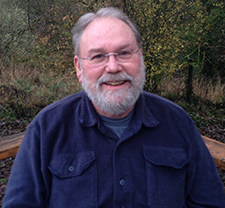In this issue we revisit the “C” word — the seemingly neverending search for a cure for paralysis. For me, the quest began in 1966, 50 years ago, when biomedical engineering succeeded in helping paraplegics stand with electrical stimulation. But for many NM readers, the search is immediate and ongoing, as in now. Yet even in this era of stem cell research, epidural stimulation, treadmill walking and other experimental treatments, the cure still seems somehow distant.
But there are unmistakable signs of progress. At times it seems that all that is needed is to discover just one more piece of the puzzle, and then everything will fall into place, mystery solved. It is unlikely, though, that just one more discovery will result in a widespread cure anytime in the next five years. One of the biggest obstacles is the deliberate nature of the scientific process itself. Another is the way our health care system is slow to include new treatments. And a third is cost. Medicare and private insurance companies are unlikely to cover the cost of expensive operations or equipment for any but a small percentage of those of us with longstanding paralysis.
For our own peace of mind we should stop talking and thinking about the “C” word, and replace it with “AI” — and I don’t mean artificial intelligence. I mean Any Improvement. Any improvement is good. And that is the undeniable message that the latest research trials keep sending.
In this month’s feature on stem cell research, we interview two recent U.S. clinical trial subjects whose gains over a one-year period following stem cell injections are not so much about small gains in finger dexterity and core strength — which they did report — they are more about overall health improvement: better blood pressure regulation, less autonomic dysreflexia, better bladder control, breathing, temperature control. And one more — improved motivation — which is especially important when practical gains tend to come with rigorous physical therapy, exercise and treadmill walking.
The most dramatic gain was reported by Dr. Wise Young, ever the indefatigable SCI pioneer, who combined some serious treadmill walking with umbilical cord blood cell injections and three other factors he is known for — (you can read more about the complete protocol in next month’s issue) — and the result was 15 out of 20 subjects regaining some ability to walk with rolling walkers. These participants had chronic (14 years post-injury), complete spinal cord injuries.
Now that is encouraging.
We now have two very dramatic and exciting clinical trial results in the last five years. First came the surprising results of the epidural stimulation trials involving four motor-complete SCI subjects who suddenly regained the ability to stand, and later move their legs with some degree of control when their implanted stimulation devices were switched on. Now we have 15 more subjects with motor complete SCI walking with the help of rolling walkers. Interestingly, the one thing both trials had in common was treadmill walking as a way of optimizing the results.
AI. Wherever it leads, any improvement is good.
Support New MobilityWait! Before you wander off to other parts of the internet, please consider supporting New Mobility. For more than three decades, New Mobility has published groundbreaking content for active wheelchair users. We share practical advice from wheelchair users across the country, review life-changing technology and demand equity in healthcare, travel and all facets of life. But none of this is cheap, easy or profitable. Your support helps us give wheelchair users the resources to build a fulfilling life. |



Recent Comments
Kevin Hoy on TiLite Releases Its First Carbon Fiber Wheelchair
tuffy on NYDJ Launches Women’s Adaptive Jeans on QVC
Lisa Cooley on How to Fund an Expensive Adaptive Vehicle